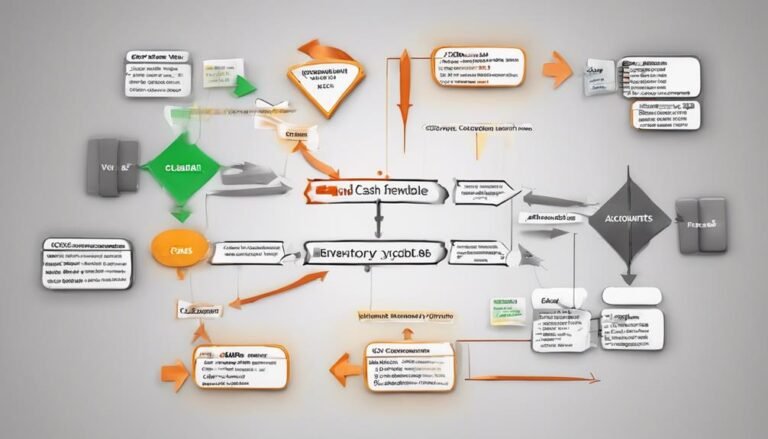Demographics: How to Collect, Analyze, and Use Demographic Data
Demographic data is essential for understanding population trends and societal characteristics. Collect data through survey techniques, including online surveys for cost-effectiveness. Analyze using data visualization tools and statistical modeling to uncover insights. For marketing, segment consumers and personalize strategies based on demographic data. Tailor products, allocate resources effectively, and enhance customer engagement. Future trends involve predictive modeling and incorporating AI for accurate predictions. Policymakers benefit from demographic analysis to adapt governance strategies. Discover how demographic data influences decisions and enhances policy development.
Key Takeaways
- Survey techniques are vital for collecting demographic data.
- Utilize data visualization tools for analyzing demographic trends.
- Tailor marketing strategies based on demographic insights.
- Predictive modeling helps forecast population changes.
- Policy development should incorporate demographic data for effective governance.
Importance of Demographic Data
Analyzing demographic data is vital for understanding the underlying characteristics and trends of populations in various sectors, guiding informed decision-making processes and strategic planning.
The significance of demographic data lies in its ability to describe the distribution of characteristics within a society, providing valuable insights into societal trends.
By studying demographic information such as age, income, education, and location, analysts can identify patterns that help predict future needs and challenges.
This data is essential for policymakers, businesses, and organizations to tailor their strategies effectively, whether in market research, resource allocation, or policy development.
Understanding demographic changes enables proactive responses to societal shifts, ensuring that decisions are based on accurate and up-to-date information reflecting the evolving landscape of populations.
Methods for Data Collection
Effective data collection methods are essential for obtaining accurate and detailed demographic information that underpins informed decision-making processes and strategic planning.
Survey techniques play a vital role in gathering demographic data by directly collecting information from targeted populations. Online surveys have become increasingly popular due to their cost-effectiveness, reach, and ability to collect data in real-time. They offer convenience for both researchers and respondents, allowing for quick dissemination and analysis of information.
Tools for Data Analysis
Continuing the discussion on demographic data analysis, the utilization of advanced tools for data analysis plays a pivotal role in extracting meaningful insights for informed decision-making and strategic planning.
Data visualization tools like charts, graphs, and dashboards help in presenting demographic trends and patterns in a visually accessible manner.
Statistical modeling techniques such as regression analysis, cluster analysis, and factor analysis enable researchers to uncover relationships between different demographic variables and predict future trends.
These tools not only aid in understanding the current demographic landscape but also assist in forecasting potential changes, guiding businesses, governments, and organizations in making data-driven decisions that are aligned with the evolving demographic dynamics.
Utilizing Demographics in Marketing
How can demographics be strategically leveraged to enhance marketing effectiveness and target specific consumer segments accurately?
Utilizing demographic data in marketing involves consumer segmentation and targeted advertising based on detailed market research and understanding of consumer behavior. By analyzing demographic information such as age, income, location, and preferences, businesses can tailor their marketing strategies to resonate with different consumer groups effectively.
This approach allows companies to personalize their messaging, products, and services to meet the specific needs and preferences of diverse demographic segments. Through targeted advertising campaigns that are informed by demographic insights, businesses can optimize their marketing efforts, increase customer engagement, and drive higher conversion rates, ultimately leading to improved business performance and competitiveness in the market.
Impact on Business Strategies
The integration of demographic insights into business strategies is pivotal for optimizing market positioning and enhancing decision-making processes. Understanding the impact of demographics on business strategies can have a profound effect on business growth and consumer targeting.
Key points to take into account include:
- Tailoring products and services to specific consumer groups based on demographic data.
- Identifying emerging market trends through demographic analysis to capitalize on new opportunities.
- Allocating resources effectively by understanding the needs and preferences of different demographic segments.
- Enhancing customer engagement and loyalty by personalizing marketing strategies according to demographic characteristics.
Future Trends in Demographic Analysis
Advancements in technology and data analytics are revolutionizing the landscape of demographic analysis, shaping future trends with unprecedented precision and depth.
Predictive modeling is increasingly being utilized to forecast population changes and behaviors based on historical data patterns. This approach allows for proactive decision-making and strategic planning in response to demographic shifts.
Demographic analysis is evolving to encompass a broader range of factors, including lifestyle choices, preferences, and cultural influences. The integration of AI and big data in demographic studies enables more accurate predictions of consumer trends and societal changes.
Understanding these future trends in demographic analysis is vital for organizations and policymakers to adapt to the dynamic nature of populations and make informed decisions that align with the evolving demographic landscape.
Policy Development Based on Demographics
Policy development based on demographics plays an essential role in shaping effective strategies for governments, businesses, and organizations. Understanding population trends and demographic shifts is vital for formulating governance strategies that address the needs of specific groups within society. Key considerations include:
- Analyzing population trends to identify policy implications.
- Adapting governance strategies to accommodate demographic shifts.
- Incorporating demographic data to tailor policies for diverse populations.
- Utilizing demographic insights to enhance decision-making processes.
Conclusion
To sum up, demographic data serves as a fundamental tool for understanding societal trends, shaping business strategies, and informing policy development.
The meticulous collection and analysis of demographic information are essential for organizations to tailor their approaches effectively.
The future of demographic analysis lies in advanced technologies and predictive analytics, offering precise insights into consumer preferences and market trends.
This data-driven approach is akin to a powerful telescope, providing a clear and magnified view of the intricate landscape of demographics.







